The Challenge of Learning at Work
There are three challenges:
- Eyes glazed over
You know you’re in trouble when employees consider classroom training as boring or not related to their “real work”. And don’t get us started about eyes getting glazed over when training is on zoom or delivered online. It gets worse when people can’t find the time for training, since it is at odds with their busy schedules.
- Low rates of knowledge retention
What’s worse is that we all know about the low rates of knowledge retention for newly learned information. Newly-acquired information gets forgotten quite quickly, per Hermann Ebbinghaus’ forgetting curve (see below). Information is lost when there is no effort to retain it and if employees don’t encounter it at work, it’s lost. Information that isn’t repeated, accessed, or used in real-life situations gets forgotten. The chart below shows that information is rapidly forgotten after it is first exposed to learners. The only way to battle that? reviewing it.
- The separation between learning and operations
In many companies learning materials and distribution is located in one large LMS (learning management system) repository which isn’t accessed often and isn’t delivered in the course of daily work. As a result the opportunity of learning on the job, in the context of work done, is missed. What we suggest in this ebook is that digital engagement with performance goals should also include micro-learning nuggets delivered in the course of work.
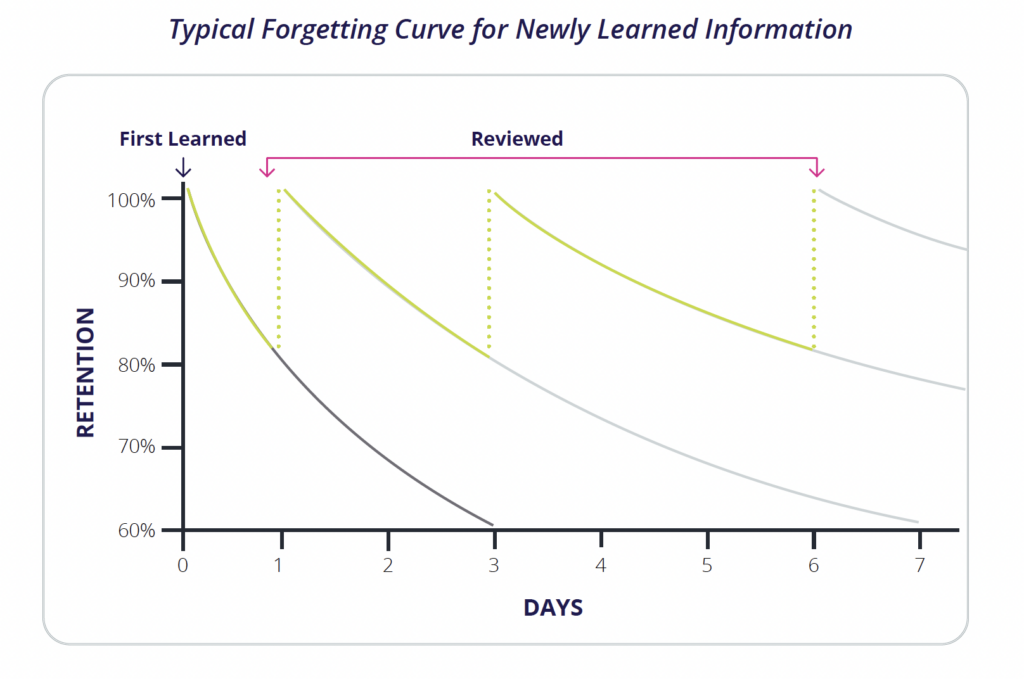
What should you do about these challenges?
Most people know the first part of the answer: eLearning that replaces classroom-based training. Yet that isn’t enough, since eLearning can have the exact same pitfalls as classroom training: it can be too lengthy or fail to create knowledge retention.
What we propose here, inspired by Will Thalheimer, is to treat your learners as “subscribers” and spread learning over time. This takes advantage of micro-learning, making use of the concept of spaced repetition in short learning bursts. Before we explain how to implement “subscription learning”, micro-learning, and how it interacts with gamification, let’s define it.
According to Will Thalheimer, subscription learning:
“…provides an intermittent stream of learning-related interactions… These learning-related interactions–called “nuggets”–can involve a great variety of learning-related events…
Nuggets are short, usually presented in less than five minutes, and are delivered to recipients using push technology; either through email, text messaging… or some other form of prompting. Nuggets are… scheduled overtime to support learning… Learners subscribe (or are subscribed) to one or more series of learning nuggets, called “threads.”
…Threads can be an alternate way to present course-like information, they can augment other learning interventions, or they can provide an alternative to traditional learning approaches. In addition, subscription learning can go beyond learning delivery and be designed to create open communication channels…”
Let’s see what the 8 steps to creating spaced learning are and how to combine them with gamification and digital engagement:
First Step:
When going from classroom (or online) training to eLearning, divide session times by 12, or even by more.
Our attention spans are getting shorter and learning styles are changing. When in-class courses are long – an hour long for each “chapter” – participation plummets. So if your eLearning replaced an hour-long classroom session, don’t replace it with an hour-long video! If you do so, you may find that people will avoid watching it.
There’s a lesson here. eLearning is a new genre. Just like movies offer a different way of expression than novels (and most people prefer watching the movie to reading the book), eLearning changes training. A novel takes a long time to read. A movie isn’t longer than 2 hours. A novel is all about text and reading. A movie isn’t. The same logic applies to eLearning. With blended learning, you can and should play with the length, learning types, and pace to create learning that is far more engaging.
Our rule-of-thumb is to divide hour-long sessions by 12. Instead of one hour-long video, try to go for 12 5-minute videos or other learning elements. If you have the editing chops try to go even lower, to 2- or 3-minute videos.
This type of learning, learning that is engaging and served “right”, actually provides value to your employees. Employees know and appreciate that and so do their bosses. They are more likely to engage with it at work and managers are more likely to recommend it.
Second Step:
Love Micro-learning
Micro-learning is a brief nugget of learning, if, in video or a simulation, it is typically 3-5 minutes long. It can also be 5 multiple-choice answers, a small reminder text, anything, really. The best way to think about it is as something that drives one specific learning outcome. Delivered on the job, it can counteract the “forgetting curve”.
Micro-learning delivers content in an engaging manner, delivered to users so that they can consume it anywhere (device-wise) and anytime. It re-engages the user with the content, reinforcing the primary training and driving knowledge retention, by making the learning sticky through reminders.
One of the benefits of micro-learning is that it forces you to phase out obsolete or long-winded content. You need to keep it short and sweet. For instance, think of 100-200 multiple choice questions that can be used to reinforce learning. Imagine your employees consume several of these questions at a time. This type of micro-learning can be consumed daily, typically through a digital engagement platform, “just in time” – when the user needs it – and through its digital nature, freeing users to consume it when and where they want. When designing micro-learning make sure to use context alignment, so that the content is related to how it would realistically appear to the employee at work. Research shows that realistic situations with physical and cognitive fidelity create more memorable learning.
Here is an example of how you can cut a classroom-based course into micro-learning nuggets.
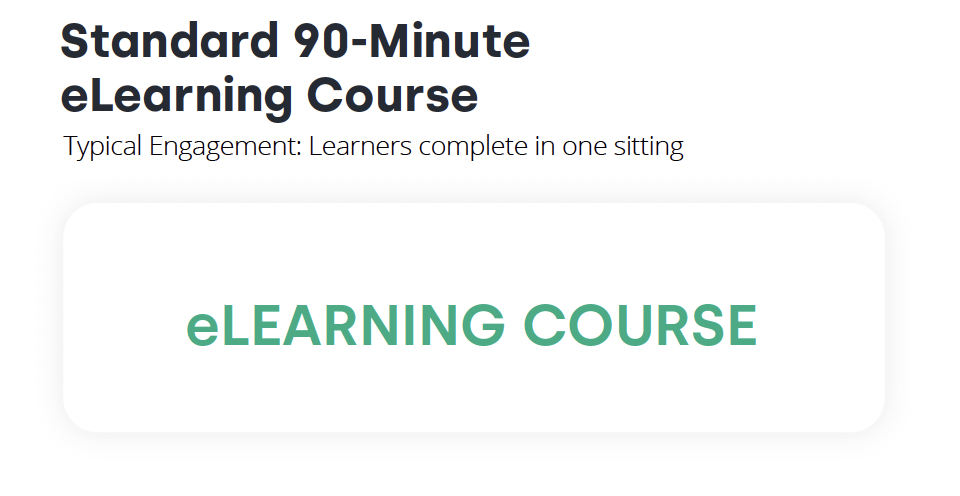
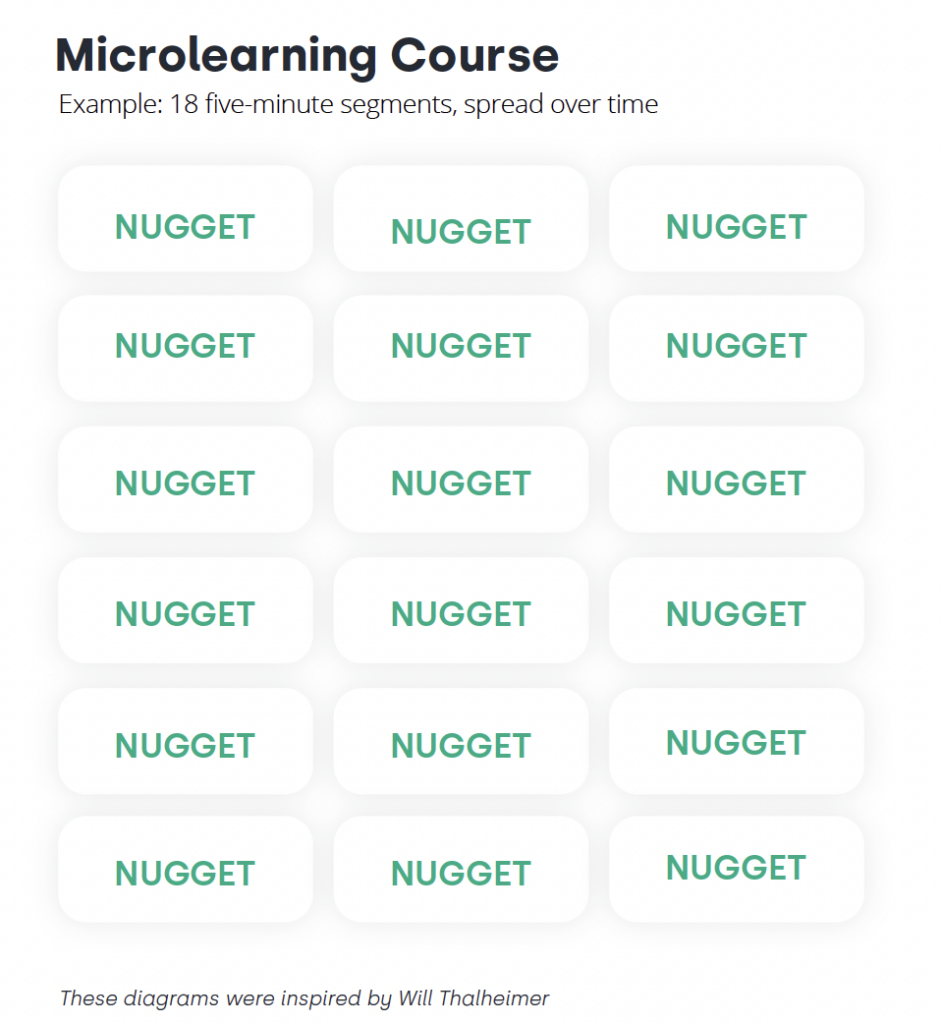
Third step:
Get to know spaced learning and spaced repetition.
According to Wikipedia, spaced learning is:
“a learning method in which highly condensed learning content is repeated three times, with two 10-minute breaks during which distractor activities such as physical activities are performed by the students. It is based on the temporal pattern of stimuli for creating long-term memories reported by R. Douglas Fields in Scientific American in September 2005. This ‘temporal code’ Fields used in his experiments was developed into a learning method for creating long-term memories by Paul Kelley, who led a team of teachers and scientists as reported in Making Minds in 2008”.
In simple terms, what this means is that you should encourage your kid to get up and jump around when studying. Spaced Learning without stopping doesn’t make sense. Spaced learning also inspired spaced repetition, whose practical implementation we discuss here. Here’s the Wikipedia definition:
“Spaced repetition is a learning technique that incorporates increasing intervals of time between subsequent review practice of previously learned material in order to exploit the psychological spacing effect”.
In simple words: this is the real reason cramming for a test doesn’t work as well as studying a little each day. Spaced micro-learning is ideal: it sends (or prompts the completion, in a digital engagement platform) learning nuggets, one by one, to employees. Spaced learning using a set of micro-learning elements can be used to ensure information retention and eventual learning success. Here’s a suggestion of such a thread, keeping in mind that spaced repetition works best with retrieval practice (hence the quizzes or multiple choice questions suggested before).

Fourth step:
Engage Often
For many companies, the million-dollar question is how often people should be engaging with eLearning. When you come from the classroom training world, the response may be once a month, once a quarter, or once a year. But, in the eLearning engagement and gamification world, the brevity of the materials and the enormous benefits related to repeating learning, make for an altogether different model: daily or weekly interaction with eLearning, possibly through a gamified digital engagement platform.
Imagine a world where employees can go through 3-4 nuggets of eLearning initially, and then answer (drill) questions or go through simulations that require applying this knowledge. Imagine them engaging with these materials for ten minutes daily over a period of a month. Would this result in better engagement and knowledge retention? You bet.
The idea is to treat learners as if they had subscribed to a learning “newsletter” from you, teaching them a thing or two on a schedule – every 2-3 days. This repeats the knowledge, spacing learning, and ensuring knowledge retention. It also is much easier to consume from the point of view of the employee, since a daily interaction of several minutes doesn’t seem to interfere with actual work. It only requires several minutes of downtime and can be prompted through a digital engagement platform that also shows which performance KPIs are tied to the learning content.
Below, you’ll find a visual example of setting a microlearning-based learning “course”, inspired by Will Thalheimer.
Another factor to remember is that repetitions don’t have to be day-in, day-out – since sometimes retrieval practice should occur with a several days’ intermission, you should interleave several different microlearning threads. Here’s an example of how to go about this and achieve maximum results for all learning threads.
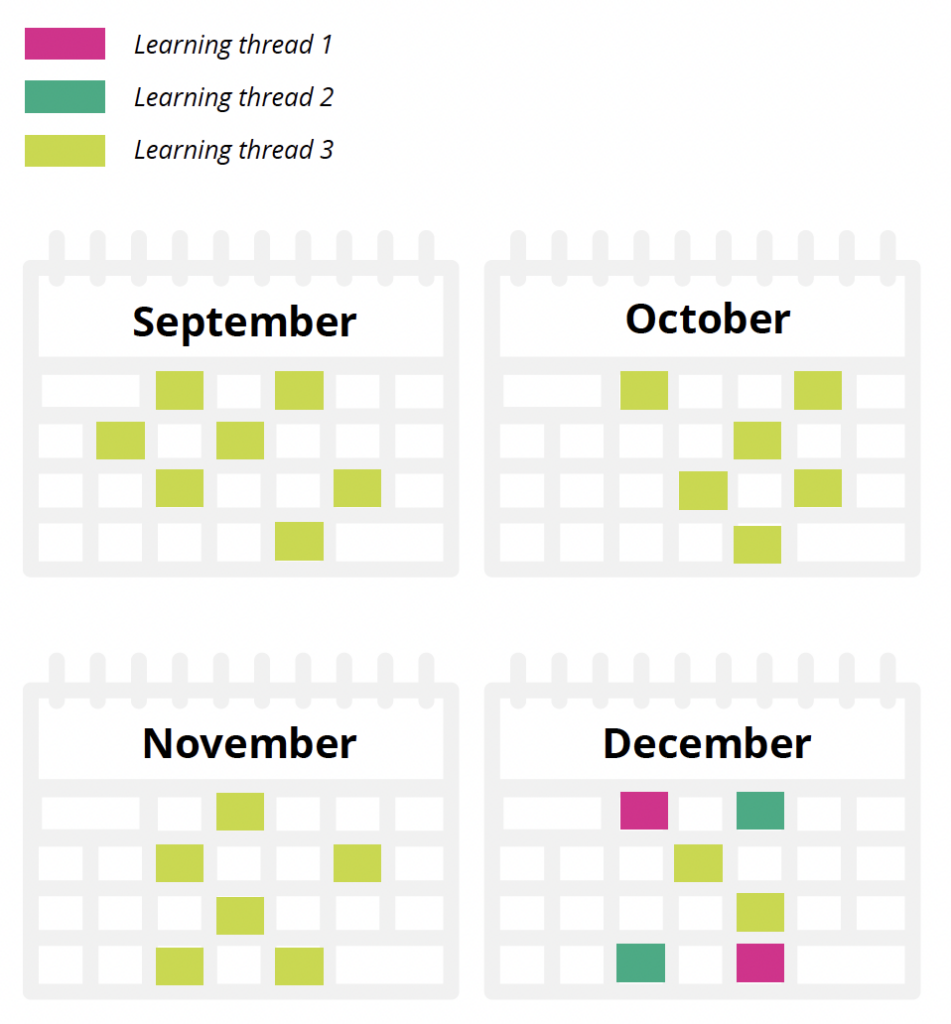
Fifth step:
Use Different Media Types
Choosing micro-learning doesn’t and shouldn’t mean using just one type of learning media. For instance, you don’t need 12 videos to replace the one hour in class. We recommend using many content types: presentations, videos, simulations for branched scenarios, quizzes, and more. Adding brief (and fun) quizzes can also contribute greatly to the success of the program, letting you measure results as you go.
Some content types to consider are:
- A simulation with a realistic scenario and realistic events that involve decision-making will drive information retrieval and memory.
- Quizzes to assess where employees are on the learning path, or for retrieval practice.
- Fun quizzes that can engage users with media, such as video questions, picture answers, and more.
- Blended sessions that combine brief learning on any media – you can add videos, presentations, links, materials from your Learning Management System system, and more. Then mix in some quizzes, and cut it into steps, signifying progression and completion at each point in the learning journey.
Sixth step:
Repeat and re-engage – and don’t forget to personalize
Use the subscription learning approach to not only deliver a course but also to repeat elements and assess knowledge retention. This will allow you to assess who needs additional training, more compliance testing, etc. Then you can reserve your eLearning users with the knowledge they need.
You can use this step to re-order content based on popularity and engagement, or according to new learning paths you’ve discovered while serving micro-learning nuggets to your “subscribers”. Research shows that retrieval practice has better results than additional reading and more study. Make use of quizzes to accomplish this.
It’s important to personalize what’s delivered to employees: use the precious time allotted to learning to actually improve what needs to be improved. Use past learning success and completion metrics for an individual employee, send guidance on issues related to performance based on the employee’s actual performance, and understand which areas need improvement, such as products not yet sold or supported by an individual employee. This mass personalization may sound too ambitious but it can actually happen when there is the use of a workforce engagement platform such as Centrical.
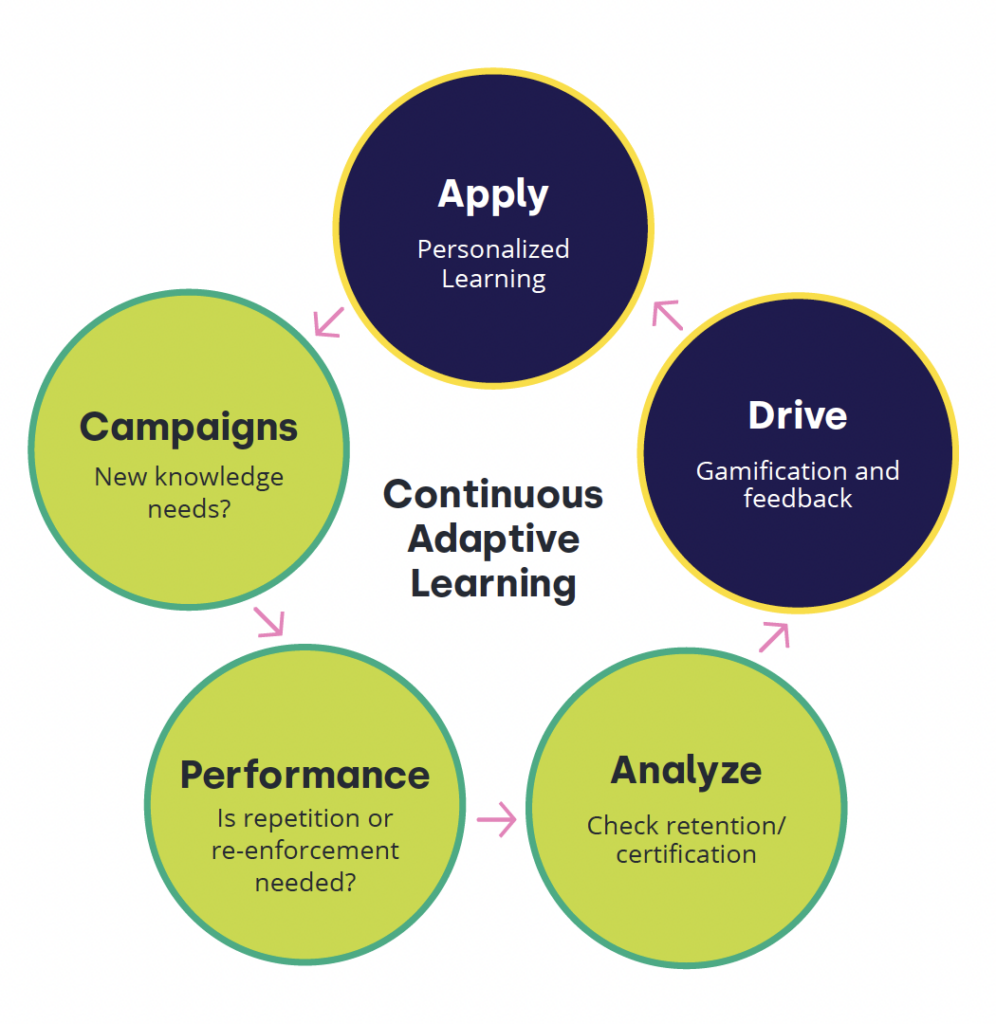
Seventh step:
Add Gamification and Feedback
Gamification is perfect for eLearning since it can drive both repetition and eLearning completion. The idea of subscription learning is a great one, yet you need to ensure that people actually consume the micro-learning you’ve subscribed them to. Instead of worrying about email open rates or completion, use gamification to serve those microlearning sessions.
While subscription learning can work well without gamification, adding gamification and digital motivation closes the loop. It contains the measurement and repetition capabilities, the learning content creation options, and, most importantly, the means to automatically administer such a course and use gamified elements to drive user interest in learning completion. Think of gamification as a fitness tracker for work, showing the employee their learning completion, giving them a sense of achievement with badges, awarding coins for sharing learning with others, and more. It’s not the game narrative, it’s about sensing the pride of doing learning well and becoming intrinsically motivated to learn more and share with others.
Feedback and recognition can be a great component of a micro-learning program. it can drive inputs about the quality and relevance of content. It can ask questions about confidence, preparedness, potential ideas, customers, anything really. This jacks up the interactivity of subscription learning and can provide valuable information and interaction to the process.
Step Eight:
Involve Frontline Managers
Managers can be a strong driver to the completion of gamified micro-learning. Use a digital engagement platform to inform managers of the learning completion of employees so they can see what learning needs to be done and encourage learning based on an employee’s real-time performance KPIs. This can actually help employees feel seen at work and sense that they receive coaching that is there to help them succeed, creating a larger cultural impact than learning alone.
Conclusion
To us, the rise of spaced and microlearning signals a change in how employees are engaged with learning. Used together with high-quality engaging content and engagement through gamification certainly paves the way, and the true secret is tying learning to the reflection on how to achieve performance goals and make every employee the best they can be.

 Madeleine Freind
Madeleine Freind
 Natalie Roth
Natalie Roth Linat Mart
Linat Mart












 Doron Neumann
Doron Neumann Gal Rimon
Gal Rimon Daphne Saragosti
Daphne Saragosti Ella Davidson
Ella Davidson Ariel Herman
Ariel Herman Ronen Botzer
Ronen Botzer